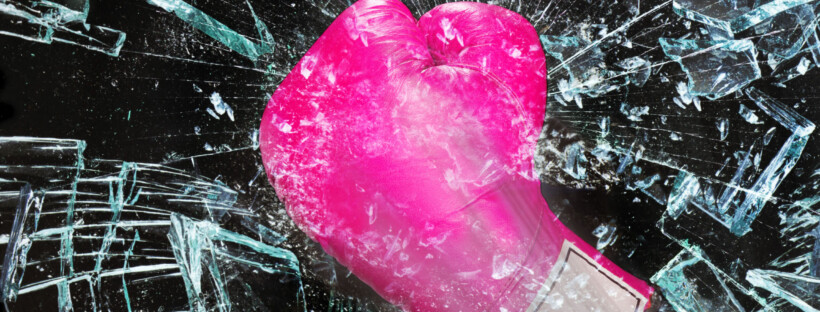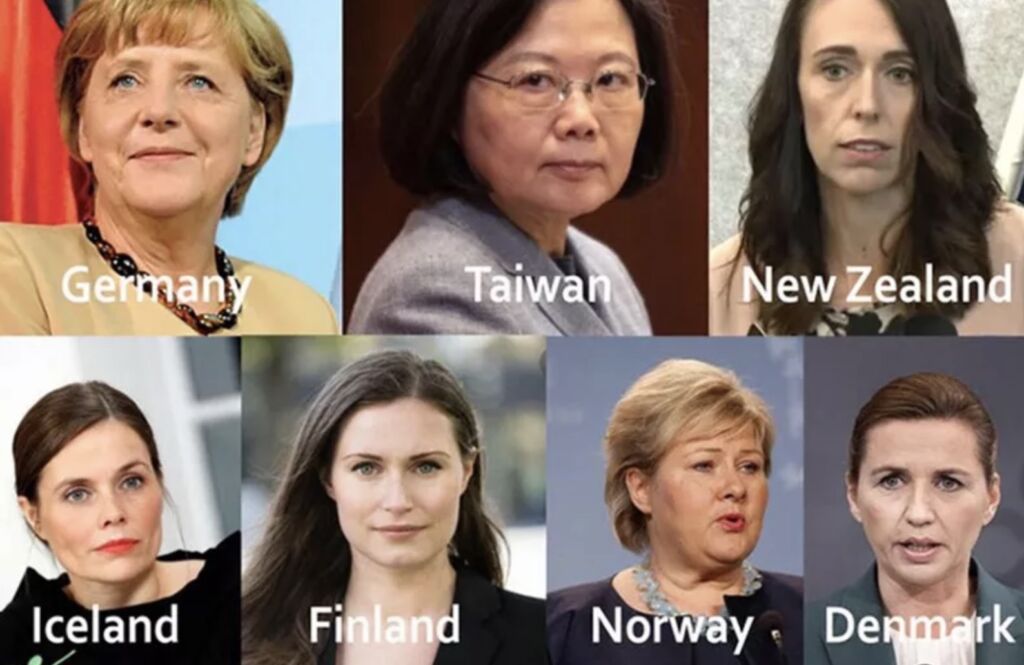Glass Ceilings and Rock ‘n Roll

I recently had the pleasure of participating in the Girls’ Schools Association’s Annual Conference for Heads, which was held virtually this year. Among the keynote speakers was Cheryl Giovannoni, CEO of the Girls’ Day School Trust (GDST) in the UK, who gave powerful remarks addressing the progress women have made towards shattering glass ceilings and the unique leadership role girls’ schools play in the pursuit of gender equity. The following is an excerpt from Cheryl’s remarks.
NCGS is proud to count the GDST among our global network of friends and colleagues. The GDST was a strategic partner for the Global Forum on Girls’ Education® II in 2018, and also served on the task force of girls’ school organizations around the world that worked with NCGS as a steering and visioning group for the pilot program of our Global Action Research Collaborative on Girls’ Education launched in 2019.
Megan Murphy, Executive Director, National Coalition of Girls’ Schools
In her concession speech in 2008, after Hillary Clinton won 18 million votes but lost out to Barack Obama in her bid to be the Democrats’ presidential nominee, she was philosophical: “Although we weren’t able to shatter that highest, hardest glass ceiling this time, thanks to you, it’s got about 18 million cracks in it.”
She then went on to display some of the characteristics we teach girls in our schools every day: to be fearless, get up when you fail, dust yourself off and try again, to believe in yourself and never, ever give up on your dreams.
Jennifer Palmieri wrote in Dear Madam President: An Open Letter to the Women Who Will Run the World: “Women haven’t plateaued; it is the rules we were playing by that are outdated.”
We may be feeling disheartened by the lack of real progress women are making in many areas of professional life. That perhaps that plateau is real. That we aren’t making much headway in redefining the working world in ways that work for us or delivers on our commitment to make it better for the next generation of girls.
After all, in the UK right now, there are fewer female CEOs of FTSE100 companies than there were five years ago.
Only 16% of employees in the UK’s tech industries are female—a proportion unchanged for over ten years—which means the risk is real that the future is being designed for women, but not by many women at all. A future in which, on average, 67% of all UK household consumption is controlled or influenced by women, yet women don’t have comparable control or influence on what actually gets made in the first place.
And it has been well publicised how much more women have been impacted by COVID-19.
Women are more likely to have been made redundant, with the need for flexibility around childcare having played a part in their redundancy; women are also more likely to be in lower paid work in the first place.
Small companies run by female entrepreneurs are half as likely to be in a strong financial position post-COVID, due to the juggling required between online learning, childcare, and having to do the lion’s share of domestic duties alongside running their businesses.
It’s no better in academia: the number of papers submitted to academic journals by women, and the number of research funding applications by women, plummeted during lockdown earlier this year, while the numbers submitted by men increased.
It turns out that female voices and expertise have also been side-lined during the pandemic, despite most healthcare professionals being women. And despite women having suffered disproportionately from the economic and social fall-out, the media has been mainly talking to…men. There are only two exceptions where women are quoted in the media more often than men—on the topics of domestic violence and childcare. Even in education, where women make up about 80% of the workforce, only 38% of quotations are attributable to women.
We so often talk about women being the ultimate economic accelerator, with a potential $28 trillion being added to the world economy if we were more equal. And right now, with the mountains of debt countries are racking up in dealing with the COVID crisis, the best possible way back to growth will be to ensure that women play an equal and full part in that economic recovery. Suspension of reporting on the gender pay gap in the UK this year does not suggest this commitment is being taken seriously. Holding organisations to account has never been more important than right now and letting them off the hook over equal pay is frankly outrageous.
Whilst we may not be able to change the current situation that easily, as educators we most certainly can prepare the girls in our schools to take on the challenge of making the world a better place. We need to be working doubly hard with this generation of young women to ensure they can see what they might be one day, that they become the torchbearers of real change, the policymakers of the future, with the ambition to use their influence and power, to play their part in designing a world that is better not just for women, but for everyone, including the planet and its sustainability for future generations.
One thing that COVID-19 has indeed shown us is how important female leadership is in the world right now, in solving our biggest problems. And that women are doing this on their own terms. Just look at these six leaders: Angela Merkel of Germany, Tsai Ing-wen of Taiwan, Mette Frederiksen of Denmark, Katrin Jakobsdottir of Iceland, Sanna Marin of Finland, Jacinda Ardern of New Zealand, and Erna Solberg of Norway. What do they have in common? Yes, they are all female, but leading countries of different sizes and cultures. The highest death toll of those six countries is in Germany at below 12,000 (remember, over 50,000 people have died of COVID in the UK and more than a quarter of a million in the US). Denmark currently has about 750 COVID deaths, Finland 370, Norway 300, New Zealand 25, Iceland 20, and Taiwan only 7.*
Writing in Forbes magazine, Avivah Wittenberg-Cox puts this down to four things that women leaders have demonstrated:
- They speak the truth—plainly and simply, no denial, anger or defensiveness. And people listen.
- They are decisive and clear in what they ask for.
- They show respect for young people (many have even said that it’s ok to be scared) and they use those young people to help spread information on their social media channels.
- They are not afraid to show love and kindness.
Just think of the powerful image of Jacinda Ardern hugging a Muslim woman after the tragic shootings at the mosques in Christchurch—an image that reverberated globally.
So that gives me huge hope for the future—evidence that success does not necessarily come from playing by the rules made by men or the stereotypical thinking that success is only ever ‘man-shaped’. It can be even more powerful and successful if it is woman-shaped. What better role models do the girls in our schools need right now than powerful, authentic, compassionate women leading in a way they can identify with and aspire to?
Research by UN Women and the Council on Foreign Relations found that when women played a substantial role in peace talks the truce was 64% less likely to fail and was 35% more likely to last at least 15 years. However, women only make up 8% of those involved in negotiations, 2% of mediators, and 5% of all witness and signatories to a peace agreement. They are also more likely to be subjected to attacks in conflict zones. And that has not changed in two decades.
One activist who is driving change commented, “Women play a crucial role because we look at conflict differently. Men’s egos start wars and prolong wars. Women’s emotion and compassion can stop (them).”
In her book, Work Like a Woman: A Manifesto For Change, Mary Portas talks about the powerful, sensitive collaborative new way of working that does not prescribe to the alpha codes of the past, but that heralds a cultural shift that the world is going through towards a more authentic, responsible, and sustainable future. And it is this new energy that she talks about as the real game changer.
She also contends that this cultural shift is being fuelled by important movements like #MeToo and Black Lives Matter, both of which will have a truly fundamental impact on our future, even though progress can often seem slow and frustrating.
We have to encourage the girls in our schools to be fearless, creative, and entrepreneurial. To be confident to not only ask for a pay rise, but to negotiate with their partner as an equal stakeholder in any relationship and not assume theirs is the also-ran career that automatically gets downgraded when children are introduced into the equation.
We need women to be at the table where decisions are being made, but we also need them to be designing the table and inviting others to join them at the table where they are in charge, comfortably so, if that is who they choose to be.
I remain resolutely positive about the future, one which is human-shaped, and I believe that girls’ schools are uniquely positioned in the work that we as leaders do every day to build the women of the future whose impact and influence will make it a better, more sustainable one for us all.
So how about that glass ceiling of Hillary’s with its 18 million cracks?
To paraphrase Alex Turner of the Arctic Monkeys, “That rock ‘n roll, it just won’t go away…it’s always waiting there, just around the corner. Ready to make its way through the sludge and smash through the glass ceiling, looking better than ever.”
So, if you needed any proof that maybe, just maybe, the cracks in the ceiling are getting wider, that things are looking better, check out the blog post She Did, You Can, and You Will by NCGS Executive Director Megan Murphy.
Cheryl Giovannoni, CEO of the Girls’ Day School Trust (UK), presented a version of these remarks during the Girls’ Schools Association’s 2020 Conference for Heads.
*COVID-19 statistics as of November 2020.
Related tags: Developing Girls as Leaders, Girls' Day Schools Trust, Girls' School Association, Glass Ceiling, Global Leaders, Leadership, Women in Politics

